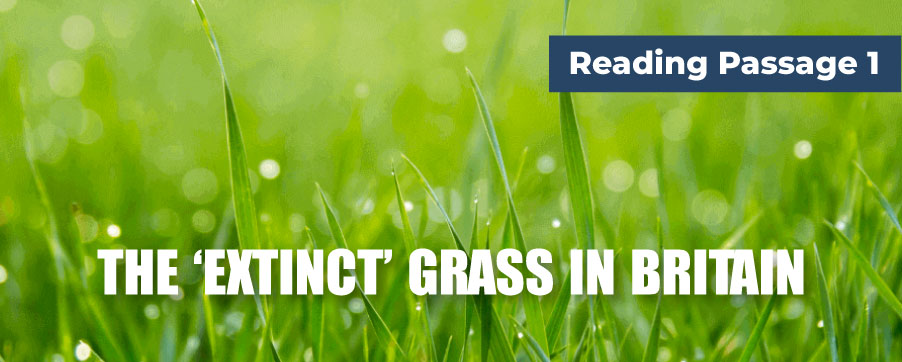
IELTS Recent Mock Tests Volume 5
- Published on: 24 Jan 2018
- Tests taken: 1,565,557
Answer Keys:
Part 1: Question 1 - 13
- 1 FALSE
- 2 TRUE
- 3 NOT GIVEN
- 4 NOT GIVEN
- 5 TRUE
- 6 TRUE
- 7 FALSE
- 8 FALSE
- 9 E
- 10 C
- 11 D
- 12 F
- 13 A
- 1 FALSE
- 2 TRUE
- 3 NOT GIVEN
- 4 NOT GIVEN
- 5 TRUE
- 6 TRUE
- 7 FALSE
- 8 FALSE
- 9 E
- 10 C
- 11 D
- 12 F
- 13 A
Part 2: Question 14 - 26
- 14 D
- 15 B
- 16 G
- 17 A
- 18 F
- 19 E
- 20 FALSE
- 21 TRUE
- 22 NOT GIVEN
- 23 FALSE
- 24 London
- 25 soft engineers
- 26 Los Angeles
- 14 D
- 15 B
- 16 G
- 17 A
- 18 F
- 19 E
- 20 FALSE
- 21 TRUE
- 22 NOT GIVEN
- 23 FALSE
- 24 London
- 25 soft engineers
- 26 Los Angeles
Part 3: Question 27 - 40
- 27 TRUE
- 28 NOT GIVEN
- 29 FALSE
- 30 NOT GIVEN
- 31 TRUE
- 32 FALSE
- 33 B
- 34 E
- 35 A
- 36 D
- 37 C
- 38 B
- 39 A
- 40 D
- 27 TRUE
- 28 NOT GIVEN
- 29 FALSE
- 30 NOT GIVEN
- 31 TRUE
- 32 FALSE
- 33 B
- 34 E
- 35 A
- 36 D
- 37 C
- 38 B
- 39 A
- 40 D
Review & Explanations:
Questions 1-8
Do the following statements agree with the information given in Reading Passage 1 ?
In boxes 1-8 on you answer sheet, write
| TRUE | if the statement agrees with the information |
| FALSE | if the statement contradicts the information |
| NOT GIVEN | If there is no information on this |
1 The name of interrupted brome came from the unprepossessing grass disappeared from places in the world for a period.
2 Interrupted brome seeds cannot sprout because they were kept accidentally at unsuitable temperature.
3 Philip Smith works at University of Manchester.
4 Kew Botanic Gardens will operate English Nature.
5 Interrupted brome grew unwantedly at the sides of sainfoin.
6 Legumes were used for feeding livestock and enriching the soil.
7 The spread of seeds of interrupted brome depends on the harvesting of the farmers.
8 Only the weed killers can stop interrupted brome from becoming an invasive pest.
- 1 Answer: FALSE
Keywords in Questions
Similar words in Passage
Q1: The name of interrupted brome came from the unprepossessing grass disappeared from places in the world for a period
Called interrupted brome because of its gappy seed-head, this unprepossessing grass was found nowhere else in the world, Gardening experts from the Victorian lira were first to record it
Note:
Based on the keywords, we can find out the needed information in the first paragraph. According to that, the name of interrupted brome did not come from the unprepossessing grass but its gappy seed-head. Moreover, you can realize that “the unprepossessing grass” is the synonym of interrupted brome. Therefore, the statement in Q1 is FALSE.
- 2 Answer: TRUE
Keywords in Questions
Similar words in Passage
Q2: Interrupted brome seeds could not sprout because they were kept accidentally at unsuitable temperature.
Even the seeds stored at the Cambridge University Botanic Garden as an insurance policy were dead, having been mistakenly kept at room temperature
Note:
Following the flow of information, we can be aware that interrupted brome seed were dead because they were kept mistakenly at room temperature, which is not suitable for the seeds, at the Cambridge University Botanic Garden. Since the seeds were dead, they obviously could not sprout. Thus, there is no doubt that the statement is TRUE.
- 3 Answer: NOT GIVEN
Keywords in Questions
Similar words in Passage
Q3: Philip Smith works at University of Manchester
He attended a meeting of the British Botanical Society in Manchester in 1979
Note
After scanning, we can get information in paragraph C. However, we can realize that the relation between Philip Smith and Manchester is just that Philip attended a meeting of the British Botanical Society in Manchester. Then, the statement indicating that Philip Smith works at University of Manchester is baseless. For that reason, the answer must be NOT GIVEN.
- 4 Answer: NOT GIVEN
Keywords in Questions
Similar words in Passage
Q4: Kew Botanic Gardens will operate English Nature
As a part of the Species Recovery Project, the organisation English Nature will re-introduce interrupted brome into the agricultural landscape, provided willing farmers are found
Note
After scanning the passage for the keyword “English Nature”, we can be aware that the organization English Nature was just mentioned once as they would re-introduce interrupted brome into the agricultural landscape. What is more, there is no information referring to the relation between Kew Botanic Gardens and English Nature in the passage. All in all, we can conclude that the the statement is NOT GIVEN.
- 5 Answer: TRUE
Keywords in Questions
Similar words in Passage
Q5: Interrupted brome grew unwantedly at the sides of sainfoin
A clue lies in its penchant for growing as a weed in fields shared with a fodder crop, in particular nitrogen-fixing legumes such as sainfoin, lucerne or clover
Note:
Based on the keyword “sainfoin”, we can easily find out the needed information. As scanning the passage, you may acknowledge that interrupted brome was usually mentioned as a weed. in fields shared with sainfoin. Pay attention to the word "penchant". "Penchant" means a liking for or a habit of doing something, especially something that other subjects might not like. Hence, the answer for Q5 should be TRUE.
- 6 Answer: TRUE
Keywords in Questions
Similar words in Passage
Q6: Legumes were used for feeding livestock and enriching the soil.
…nitrogen-fixing legumes such as sainfoin, lucerne or clover. According to agricultural historian Joan Thirsk. the humble sainfoin and its company were first noticed in Britain in the early 17th century. Seeds brought in from the Continent were sown in pastures to feed horses and other livestock… And by 1650 the legumes were increasingly introduced into arable rotations, to serve as green nature to
boost grain yieldsNote
Following the flow of information in Q5, we can find out the answer for this question in paragraph H and I. Accordingly, seeds of legumes were sown in pastures to feed horses and other livestock. Moreover, the legumes were increasingly introduced into arable rotations to serve as green nature to boost grain yields. In other words, legumes were used for feeding livestock and enriching the soil. Therefore, the statement is TRUE.
- 7 Answer: FALSE
Keywords in Questions
Similar words in Passage
Q7: The spread of seeds of interrupted brome depends on the harvesting of the farmers.
Each spring, the brome relied on farmers to resow its seeds;
Note:
After scanning, we can find out the needed information in paragraph K. According to that, the spread of seeds of interrupted brome does not depend on the harvesting of the farmers but the resowing of the farmers. Thus, the statement is FALSE.
- 8 Answer: FALSE
Keywords in Questions
Similar words in Passage
Q8: Only the weed killers can stop interrupted brome from becoming an invasive pest.
Any farmer willing to foster this unique contribution to the world's flora can rest assured that the grass will never become an invasive pest
Note
As scanning paragraph K, you must have seen the keyword “weed killers”. Continuing to study the flow of information, we can find out the needed one in paragraph L. Accordingly, interrupted brome will never become an invasive pest if there is any farmer willing to foster a unique contribution to the world’s flora. From that point, it is imprecise to suppose that only the weed killers can stop interrupted brome from becoming an invasive pest. All in all, the answer must be FALSE.
Questions 9-13
Look at the following opinions or deeds (Questions 9-13) and the list of people below.
Match each opinion or deed with the correct person, A-F.
Write the correct letter, A-F, in boxes 9-13 on your answer sheet.
9 identified interrupted brome as another species of brome.
10 convinced others about the status of interrupted brome in the botanic world.
11 said that sainfoin was first found more than 300 years ago.
12 helped farmers know that sainfoin is useful for enriching the soil.
13 collected the first sample of interrupted brome.
| A | A. M. Barnard |
| B | Philip Smith |
| C | George Claridge Druce |
| D | Joan Thirsk |
| E | Professor Hackel |
| F | Nathaniel Fiennes |
- 9 Answer: E
Keywords in Questions
Similar words in Passage
Q9: _______ identified interrupted brome as another species of brome
So close is the relationship that interrupted brome was originally deemed to be a mere variety of soil brome by the great Victorian taxonomist Professor Hackel.
Note
Once you find out the similar words of keywords, it is fairly easy to choose the right answer. According to the information in paragraph G, we acknowledge that the great Victorian taxonomist Professor Hackel detected the relationship that interrupted brome was originally deemed to be mere variety of soil brome. In other words, he is the first one supposing that interrupted brome is another species of brome. Thus, we should fill the blank with “Professor Hackel” (E).
- 10 Answer: C
Keywords in Questions
Similar words in Passage
Q10: ______ convinced others about the status of interrupted brome in the botanic world.
Druce had taken notes on the grass and convinced his peers that the grass deserved its own status as a species
Note
Based on the keyword “convinced” and “status”, we can find out the needed information in paragraph G, following the flow of information in Q9. Since Druce’s peers can be considered as others, it was said that Druce convinced others about the status of interrupted brome in the botanic world as a species. From that point, the blank needs filling with “George Claridge Druce” (C).
- 11 Answer: D
Keywords in Questions
Similar words in Passage
Q11: ______ said that sainfoin was first found more than 300 years ago.
According to agricultural historian Joan Thirsk, the humble sainfoin and its company were first noticed in Britain in the early 17th century
Note
All keywords and phrase have been highlighted in the same colors. Pay attention to the number 300 years. Today we're living in the 21st century. Sainfoin was first noticed in the 17th century. By doing a simple subtraction, we can have the number of more than 300. Therefore, the answer should be Joan Thirsk (D).
- 12 Answer: F
Keywords in Questions
Similar words in Passage
Q12: _______ helped farmers know that sainfoin is useful for enriching the soil
And by 1650 the legumes were increasingly introduced into arable rotations, to serve as green nature to boost grain yields. A bestseller of its day, Nathaniel Fiennes's Sainfoin Improved, published in 1671, helped to spread the word
Note
The phrase “enriching the soil” has been mentioned in Q6. Based on that, we can easily find out the needed information for this question. Moreover, we must be aware that the statement does not indicates the one detecting that sainfoin is useful for enriching the soil, but the one who helped farmers know that. According to above sentences, then, we know that it is Nathan Fiennes. Thus, the answer must be F.
- 13 Answer: A
Keywords in Questions
Similar words in Passage
Q13: ______ collected the first sample of interrupted brome
the credit for the discovery of interrupted brome goes to a Miss A. M. Barnard, who collected the first specimens at Odsey, Bedfordshire, in 1849
Note
Based on the keyword, we can find out the needed information in paragraph J. Accordingly, it is Miss A.M. Barnard who collected the first specimen of interrupted brome. It will be easy if you know that “specimens” is the synonym of “sample”. Or else, because the writer mentioned the discovery of interrupted brome right before the first specimens, we can figure out that it must be the sample of interrupted brome. All things considered, the answer must be A. A.M. Barnard.
READING PASSAGE 1
You should spend about 20 minutes on Questions 1-13, which are based on Reading Passage 1 below.

The “Extinct” Grass in Britain
A
The British grass interrupted brome was said to be extinct, just like the Dodo. Called interrupted brome because of its gappy seed-head, this unprepossessing grass was found nowhere else in the world, Gardening experts from the Victorian lira were first to record it. In the early 20th century, it grew far and wide across southern England. But it quickly vanished and by 1972 was nowhere to be found. Even the seeds stored at the Cambridge University Botanic Garden as an insurance policy were dead, having been mistakenly kept at room temperature. Fans of the glass were devastated.
B
However, reports of its decline were not entirely correct. Interrupted brome has enjoyed a revival, one that's not due to science. Because of the work of one gardening enthusiast, interrupted brome is thriving as a pot plant. The relaunching into the wild of Britain's almost extinct plant has excited conservationists everywhere
C
Originally, Philip Smith didn’t know that he had the very unusual grass at his own home. When he heard about the grass becoming extinct, he wanted to do something surprising. He attended a meeting of the British Botanical Society in Manchester in 1979, and seized His opporlunity. He said that it was so disappointing to hear about the demise of the interrupted brome. "What a pity we didn’t research it further!” he added. Then. all of a sudden he displayed his pots with so called "extinct grass" lot all to see.
D
Smith had kept the seeds from the last stronghold of the grass, Pamisford in 1963. It was then when the grass stalled to disappear from the wild. Smith cultivated the grass, year after year. Ultimately, it was his curiosity in the plant that saved it. not scientific or technological projects that
E.
For now, the bromes future is guaranteed. The seeds front Smith's plants have beet, securely stored in the cutting edge facilities of Millennium Seed Bank at Wakehurst Place in Sussex. And living plants thrive at the botanic gardens at Kew, Edinburgh and Cambridge. This year, seeds are also saved at sites all across the country and the grass now nourishes at several public gardens too.
F
The grass will now be reintroduced to the British countryside. As a part of the Species Recovery Project, the organisation English Nature will re-introduce interrupted brome into the agricultural landscape, provided willing farmers are found. Alas, the grass is neither beautiful not practical. it is undoubtedly a weed, a weed that nobody cares for these days. The brome wax probably never widespread enough to annoy farmers and today, no one would appreciate its productivity or nutritious qualities. As a grass, it leaves a lot to be desited by agriculturalists.
G
Smith’s research has attempted to answer the question of where the grass came from. His research points to mutations from other weedy grasses as the most likely source. So close is the relationship that interrupted brome was originally deemed to be a mere variety of soil brome by the great Victorian taxonomist Professor Hackel. A botanist from the 19th century, Druce. had taken notes on the grass and convinced his peers that the grass deserved its own status as a species. Despite Druce growing up in poverty and his self-taught profession, he became the leading botanist of his time.
H
Where the grass came from may be clear, but the timing of its birth may be tougher to find out. A clue lies in its penchant for growing as a weed in fields shared with a fodder crop, in particular nitrogen-fixing legumes such as sainfoin, lucerne or clover. According to agricultural historian Joan Thirsk. the humble sainfoin and its company were first noticed in Britain in the early 17th century. Seeds brought in from the Continent were sown in pastures to feed horses and other livestock. However, back then, only a few enthusiastic gentlemen were willing to use the new crops for their prized horses.
I
Not before too long though, the need to feed the parliamentary armies in Scotland, England and behind was more pressing than ever. farmers were forced to produce more bread, cheese and beer. And by 1650 the legumes were increasingly introduced into arable rotations, to serve as green nature to boost grain yields. A bestseller of its day, Nathaniel Fiennes's Sainfoin Improved, published in 1671, helped to spread the word. With the advent of sainfoin, clover and lucerne. Britain's very own rogue grass had suddenly at rivet.
J
Although the credit for the discovery of interrupted brome goes to a Miss A. M. Barnard, who collected the first specimens at Odsey, Bedfordshire, in 1849, the grass had probably lurked undetected in the English countryside for at least a hundred years. Smith thinks the plant- the world’s version of the Dodo probably evolved in the late 17th or early 18th century, once sainfoin became established. Due mainly to the development of the motor car and subsequent decline of fodder crops for horses, the brome declined rapidly over the 20th century. Today, sainfoin has almost disappeared from the countryside, though occasionally its colourful flowers are spotted in lowland nature reserves. More recently artificial fertilizers have made legume rotations unnecessary
K
The close relationship with out-of-fashion crops spells trouble for those seeking to re-establish interrupted brome in today’s countryside. Much like the once common arable weeds, such as the corncockle, its seeds cannot survive long in the soil. Each spring, the brome relied on farmers to resow its seeds; in the days before weed killers and advanced seed sieves, an ample supply would have contaminated supplies of crop seed. However fragile seeds are not the brome’s only problem: this species is also unwilling to release its seeds as they ripen. According to Smith. The grass will struggle to survive even in optimal conditions. It would be very difficult to thrive amongst its more resilient competitors found in today’s improved agricultural landscape
L.
Nonetheless, interrupted brome’s reluctance to thrive independently may have some benefits. Any farmer willing to foster this unique contribution to the world's flora can rest assured that the grass will never become an invasive pest. Restoring interrupted brome to its rightful home could bring other benefits too, particularly if this strange species is granted recognition as a national treasure. Thanks to British farmers, interrupted brome was given the chance to evolve in the first place. Conservationists would like to see the grass grow once again in its natural habitat and perhaps, one day. seeing the grass become a badge of honour for a new generation of environmentally conscious farmers.











